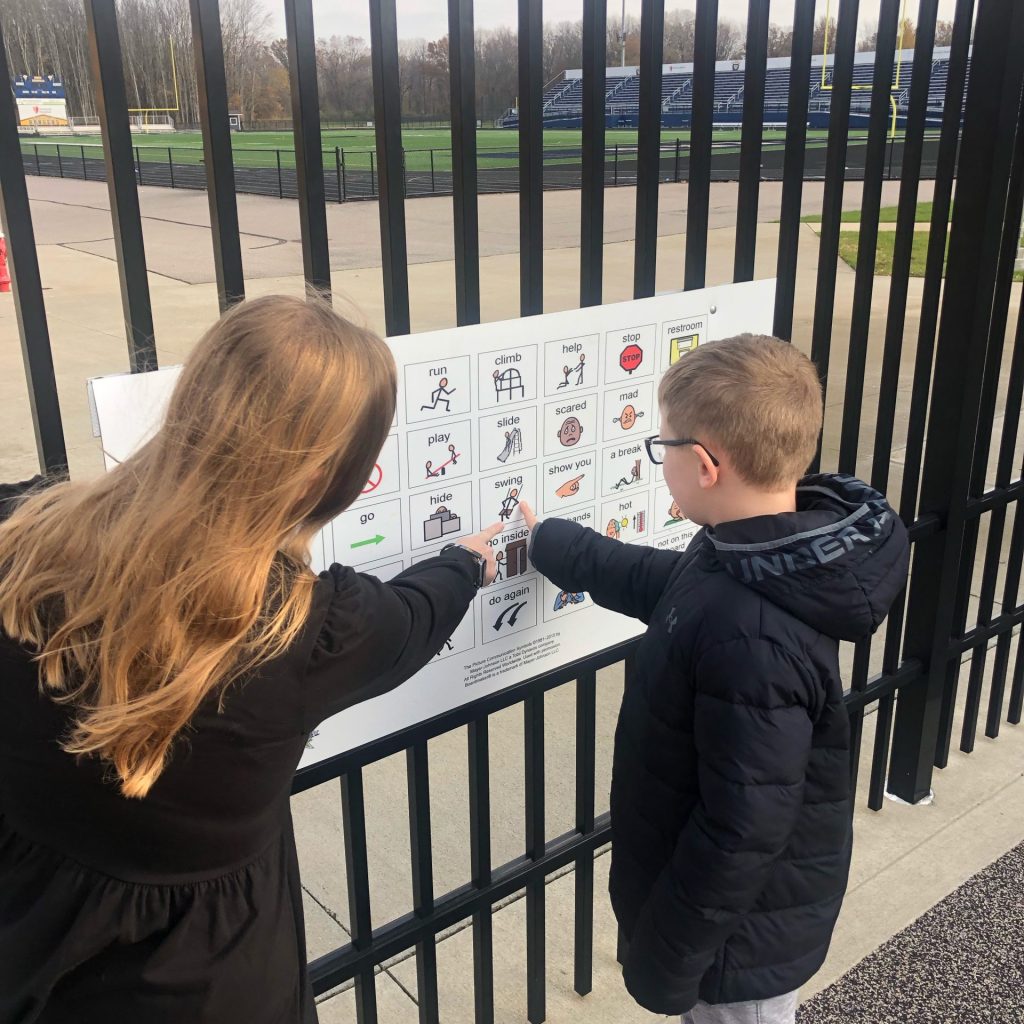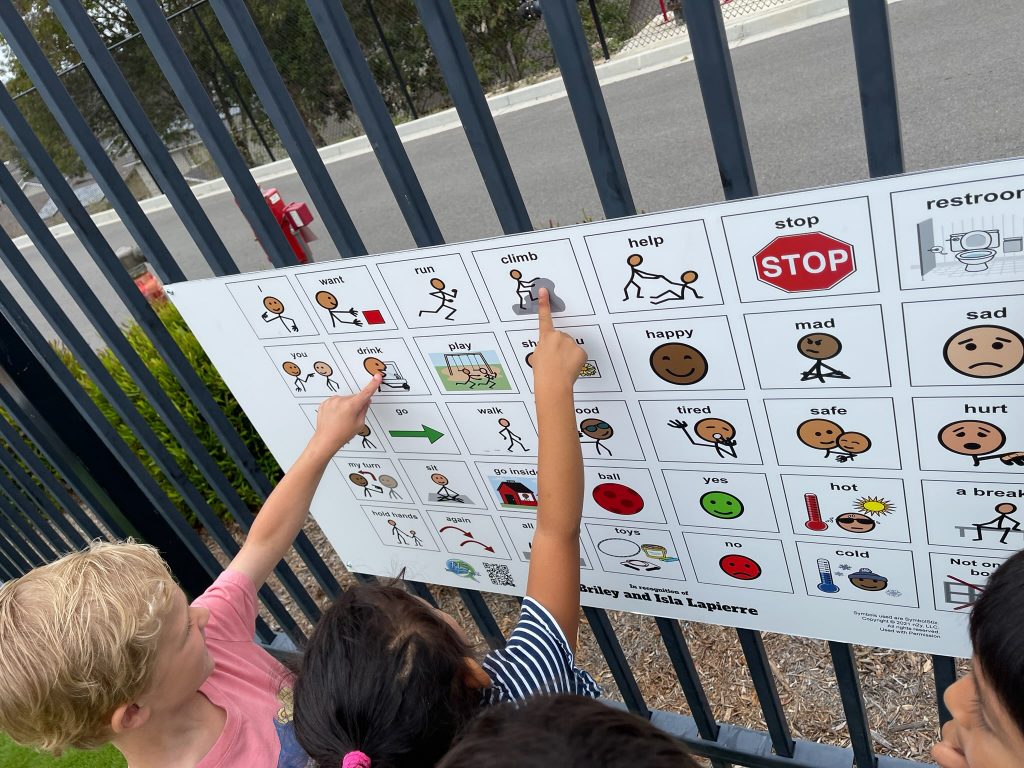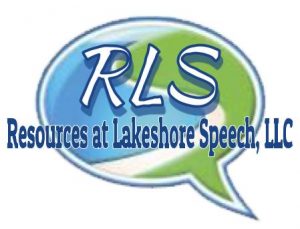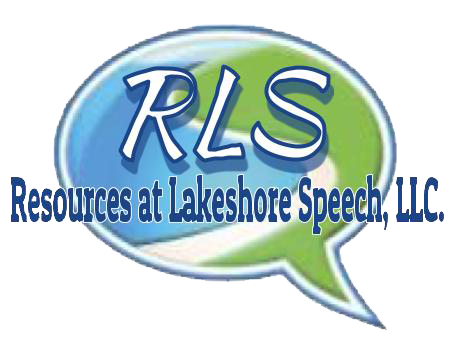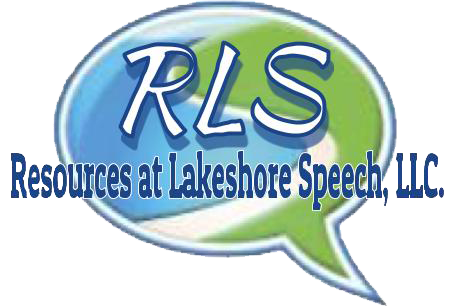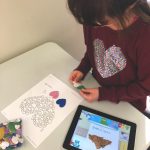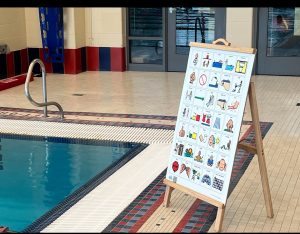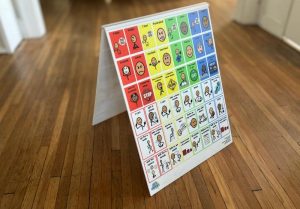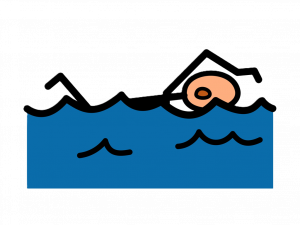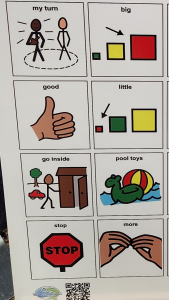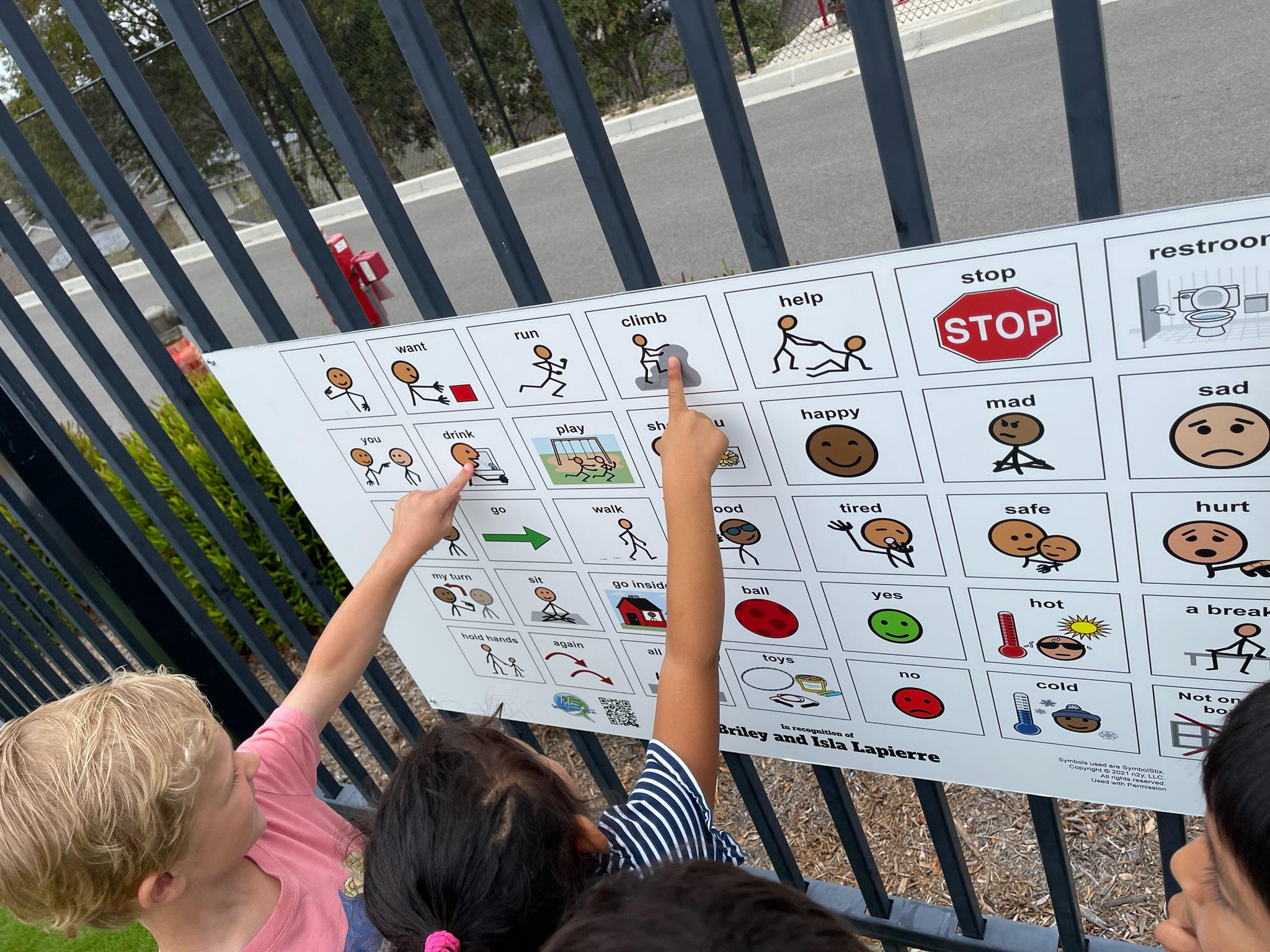
Communication boards are valuable tools for individuals with communication differences. They provide the user a way to express needs, wants, and thoughts. In this blog post, we will discuss how to model and encourage the use of communication boards to increase communication and build meaningful relationships.
Understanding the Basics:
- A communication board is a non-electronic, visual tool that displays symbols, words, or pictures representing various concepts, actions, or objects.
- Boards can be customized based on an individual’s needs and preferences.
- Users point to or touch symbols on the board to convey messages or participate in conversations.
Setting Up the Board:
- Place the board in a comfortable and accessible position, ensuring it is within reach of the user.
- Organize symbols logically and in a scientific manner. Your speech-language pathologist will be the best person to have help with this.
- Use clear symbols and always provide text labels to increase visibility and comprehension.
Teaching and Modeling:
- Introduce the board to the user and explain its purpose.
- Model how to use the board by pointing to symbols and saying the corresponding words or phrases.
- Encourage the user to interact with the board.
- Frequent modeling of its use will increase the intended users interest and willingness to attempt to use it
Promoting Independence:
- Encourage the user to use the board independently whenever possible.
- Provide prompts and support as needed, gradually fading assistance as the user becomes more proficient.
- Reinforce the use of the board by responding appropriately to messages conveyed through it.
- It’s OK to deny a request or correct a comment – that is how we all learn language.
Incorporating Communication Partners:
- Educate communication partners (e.g., family members, caregivers, teachers) on how to use the board.
- Encourage partners to be patient and supportive.
- Suggest the partners model the use of the communication board frequently.
- Foster a communicative environment where the board is integrated into daily interactions and activities.
Conclusion:
Communication boards are valuable tools for individuals with communication differences, providing them with a means to express themselves and participate more fully in daily life. By following the tips outlined in this post, you can help increase the effectiveness of a communication board, giving everyone a voice!
